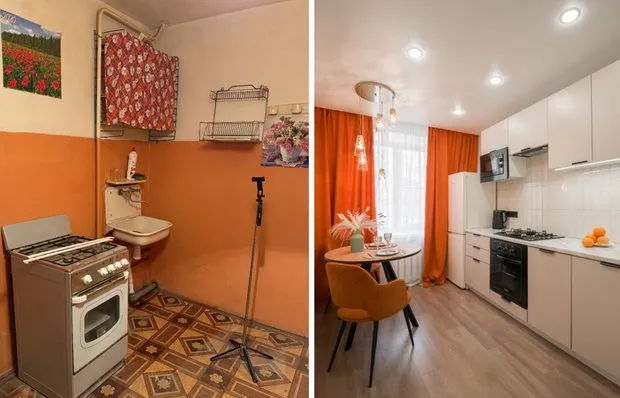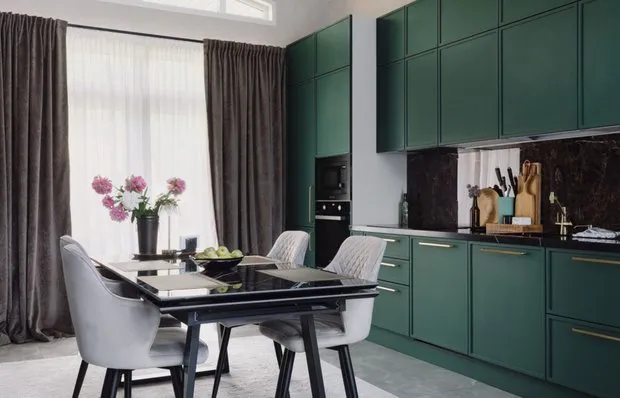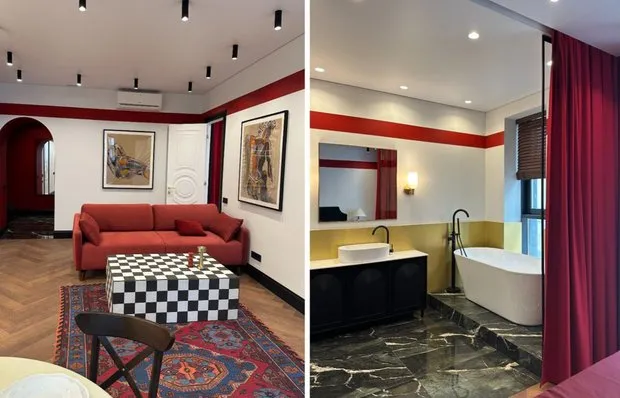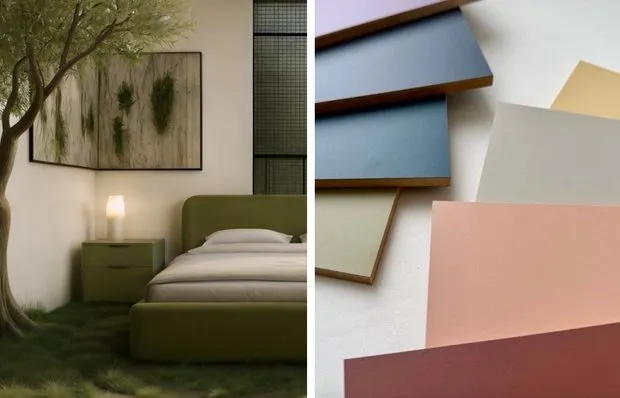There can be your advertisement
300x150
Repairing a Brezhnev-Era Apartment for 300 Thousand Rubles: Transforming a Typical Two-Room Flat into Stylish Living Space
The secret to success lies in proper planning, material selection, and prioritization
Breznhev-era apartments are often considered hopeless—low ceilings, small kitchens, and narrow corridors. However, with a thoughtful approach, these flats can be transformed into comfortable modern living spaces without million-dollar expenses. The key is understanding layout specifics and knowing where to save and where savings will backfire.
A budget of 300 thousand rubles allows for a quality cosmetic renovation including sanitary fittings replacement, electrical system modernization, and a radical interior makeover. The secret to success lies in proper planning, material selection, and prioritization.
Key takeaways from the article:
- Demolition and preparation should be planned for 30-40 thousand rubles;
- The most expensive items are electrical wiring and plumbing (around 50-60 thousand each);
- Paint is cheaper than wallpaper and looks more modern;
- Mid-range laminate is more practical than expensive parquet;
- Proper lighting can visually increase the apartment size by 50%.
Layout Analysis: Working with What You Have
A typical Brezhnev-era flat has an area of 44-54 square meters, a kitchen of 6-7 square meters, a separate bathroom, and a hallway. Main issues include low ceilings (2.5 m), narrow corridors, and poorly placed doors.
A major reconfiguration will consume half the budget for approvals and construction work. Therefore, it's more reasonable to work within existing layouts using design tricks to fix flaws.
You can remove non-load-bearing partitions between the kitchen and living room without permits, combine the bathroom, and widen door frames. These changes can dramatically transform the space for a reasonable price.
Before starting any work, check the condition of utilities. In Brezhnev-era buildings, water supply and heating pipes often need replacement—better to know about this in advance.
Demolition and Preparation: 35,000 Rubles
Start with removing old coverings and plumbing fixtures. Wallpaper, linoleum, and tiles in the bathroom must be completely removed. If you plan to merge rooms, add wall demolition.
Demolition can be done by yourself, saving 15-20 thousand rubles. However, keep in mind that it's heavy and messy work, plus you need to handle waste removal.
Preparing walls for finishing is a key step. In Brezhnev-era flats, walls are often uneven, cracked, and have height differences. Quality plastering and spackling will cost 15-20 thousand rubles, but without it, any finishing will look cheap.
Don't skimp on primer—it improves material adhesion and extends the life of the repair. Deep-penetrating primer costs 2-3 thousand rubles, but it pays off with years of flawless wall appearance.
Electrical Work: 55,000 Rubles
In Brezhnev-era buildings, electrical wiring is often aluminum and designed for fewer appliances. A full electrical system replacement is a must for safety and comfort.
New wiring, circuit breakers, sockets, and switches will cost 40-45 thousand rubles. Electrician labor adds another 10-15 thousand. Cutting corners on electrical work is dangerous—the poor installation can lead to a fire.
Plan the number of sockets in advance. Each room should have at least 4-6 outlets, and the kitchen needs 8-10. It's better to install more sockets now than to use extension cords later.
Install Residual Current Circuit Breakers (RCCB) and differential circuit breakers. These add another 5-7 thousand rubles but ensure safety.
Plumbing and Bathroom: 60,000 Rubles
Replacing water supply and drainage pipes is another mandatory expense. Old cast iron and steel pipes should be replaced with polypropylene or metal-plastic pipes.
New pipes, fittings, and plumbing work cost 25-30 thousand rubles. Economy-class fixtures (toilet, sink, bathtub or shower cabin) add another 20-25 thousand.
In a small bathroom of a Brezhnev-era flat, a shower cabin is more practical than a bathtub—this saves space and water. A quality economy-class shower cabin costs 15-20 thousand rubles.
Tiles are the most practical option for bathrooms. Affordable 20x30 cm tiles cost 500-800 rubles per square meter. For a bathroom of 3-4 square meters, materials will cost 8-10 thousand rubles.
Wall Finishing: 45,000 Rubles
Paint is the most budget-friendly and stylish wall option. Quality water-emulsion paint costs 500-800 rubles per liter, one liter covers 6-8 square meters in two coats.
For a two-room flat, you'll need 8-10 liters of paint, i.e., 5-8 thousand rubles. Brushes, rollers, and masking tape—another 2-3 thousand rubles. Painter’s labor costs 200-300 rubles per square meter.
You can paint walls yourself—this is not hard if walls are properly prepared. Save 15-20 thousand rubles and get exactly the shade you wanted.
One wall can be an accent—paint it in a contrasting color or use decorative plaster. This adds character to the interior for a small cost.
Flooring: 40,000 Rubles
32-33 class laminate is the optimal choice for Brezhnev-era flats. It costs 800-1200 rubles per square meter, looks decent, and is easy to install.
For a 45-50 square meter flat, you’ll need materials for 35-40 thousand rubles. Underlayment adds another 3-5 thousand. Installation can be done yourself, saving 10-15 thousand rubles.
In bathrooms and kitchens, tiles or water-resistant laminate are better. Affordable 30x30 cm ceramic tile costs 400-600 rubles per square meter.
Removing door thresholds between rooms visually expands the space and creates a sense of unity in the entire flat.
Doors and Windows: 35,000 Rubles
Economy-class interior doors cost 3-5 thousand rubles per panel plus 1-2 thousand for installation. For a two-room flat, you’ll need 4-5 doors, i.e., 20-25 thousand rubles.
You can save money by keeping old door frames and replacing only the panels. Or choose frameless doors—they're cheaper and suitable for standard openings.
Entry doors don’t need replacement if in good condition. Just update locks and repaint—this costs 3-5 thousand rubles.
Plastic windows, if replacement is needed, will cost 20-30 thousand rubles. Better to delay their replacement for the next renovation stage if the old ones still function.
Lighting: 20,000 Rubles
Proper lighting is the secret to a stylish interior. In Brezhnev-era flats with low ceilings, it's better to avoid central chandeliers in favor of recessed lights and wall sconces.
LED spotlights cost 500-1000 rubles each. For a flat, you’ll need 15-20 lights, i.e., 10-15 thousand rubles. Track lighting systems are a modern alternative to recessed lights.
Make several lighting scenarios in each room: bright working light and dimmed ambient light for relaxation. This creates comfort and visually expands the space.
Wall lights in the hallway and bathroom replace overhead lighting and make rooms appear taller. Mirrors with backlighting add modernity to the interior.
Kitchen: Optimization Without Redesign
An economy-class kitchen cabinet costs 40-60 thousand rubles, which doesn’t fit our budget. But you can update the old kitchen for 15-20 thousand rubles.
Replace cabinet doors or repaint existing ones in a current color. Change handles to modern ones—this can completely change the look for 2-3 thousand rubles.
Replace the countertop with a more modern one—post-forming or artificial stone costs 3-5 thousand rubles per linear meter.
A tile backsplash or mosaic costs 5-7 thousand rubles and makes the kitchen stylish. You can use moisture-resistant photo panels—they are cheaper and easier to install.

Design: Ekaterina Masaltseva. Furniture and Decor: 30,000 Rubles
With the remaining money, you can buy essential furniture: a sofa for the living room, a bed in the bedroom, a table and chairs.
- IKEA or economy segment furniture looks decent and functional. A sofa can cost 15-20 thousand rubles, a bed—8-12 thousand.
- Textiles change the interior dramatically. Curtains, cushions, and bedspreads in a unified style create a cohesive look for 5-8 thousand rubles.
- A few large plants in attractive pots add warmth and freshness. It’s cheap but very effective for creating atmosphere.

Design: Ekaterina Lyubimkina
Design Tricks for Small Apartments
- Light-colored walls and ceiling visually expand the space. White, beige, light gray—safe options for Brezhnev-era flats.
- Mirrors double the space. A large mirror in the hallway or living room creates a sense of spaciousness.
- Vertical lines make ceilings appear higher. Use striped wallpaper on one wall, tall narrow cabinets, vertical panels.
- Open shelves instead of closed cabinets make the interior lighter. But keep order on them.
What You Can Do Yourself
- Painting walls is the simplest task for beginners. It requires care and patience, but the result can be as good as professional.
- Laying laminate is also within most people’s abilities. The key is to measure the room accurately and buy material with a surplus.
- Applying wallpaper over paint is a compromise between wallpaper and paint. It hides minor wall imperfections and gives an interesting texture.
- Assembling IKEA furniture is a great way to save on delivery and assembly. Instructions are clear, and tools are simple.
Where You Can’t Cut Costs
- Electrical and plumbing work—high-risk zones. Poor work can lead to flooding or fire.
- Wall preparation for finishing—the foundation of a beautiful renovation. Crooked walls ruin any expensive finish.
- Waterproofing in the bathroom—mandatory expense. A leak to neighbors will cost more than proper waterproofing.
- Materials for hidden work—pipes, wires, fasteners. Cutting corners here is dangerous and unwise.
Repairing a Brezhnev-era apartment for 300 thousand rubles is a realistic task with proper planning. The key is setting priorities, not chasing fashion trends, and focusing on functionality. The result can pleasantly surprise and exceed expectations.
Cover: Design Project by Ilona Rafikova
More articles:
 Maya Plisetskaya: How the Great Ballerina Lived Offstage
Maya Plisetskaya: How the Great Ballerina Lived Offstage Before and After: Stylish and Budget-Friendly Transformation of a 30 m² Studio Apartment in a Brezhnev-era Building
Before and After: Stylish and Budget-Friendly Transformation of a 30 m² Studio Apartment in a Brezhnev-era Building What the Perfect Apartment Looks Like Through a Designer's Eyes: A Space You'll Want to Live In
What the Perfect Apartment Looks Like Through a Designer's Eyes: A Space You'll Want to Live In Personal Experience: How We Furnished a Cozy Country House in Istra in Two Months
Personal Experience: How We Furnished a Cozy Country House in Istra in Two Months House in the Suburbs Designed by an Interior Designer for Herself and Her Family
House in the Suburbs Designed by an Interior Designer for Herself and Her Family Stylish and Thoughtfully Designed Kitchen in a 65 sqm Loft
Stylish and Thoughtfully Designed Kitchen in a 65 sqm Loft Bold and Unconventional Solutions in a Vibrant 80 m² Trash Style
Bold and Unconventional Solutions in a Vibrant 80 m² Trash Style When Interior Starts with Color: How to Choose a Palette You Won't Get Tired Of
When Interior Starts with Color: How to Choose a Palette You Won't Get Tired Of